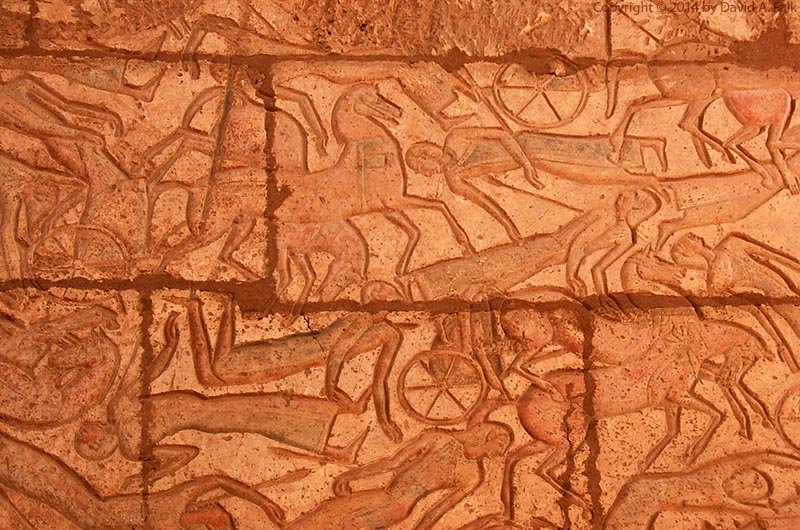Movie versions of the exodus portray the parting of the Reed (Red) Sea as massive vertical walls of water that the Israelites passed between. The Egyptians are shown blindly following after the Israelites, possibly out of fear of Pharaoh. But I have to ask. Who in their right mind would enter into a box canyon of water?
The story of the Reed Sea is more nuanced than it may first appear. In a previous blog, we discussed that the Reed Sea was one of the marshy lakes located near where the Suez Canal exists today. It was in the estuary where the Pelusiac branch of the Nile emptied into the Mediterranean.
But some details of the account are often overlooked that reveal much about the story. The first is that the “wall” of water mentioned in Exod 14:22 and 29 is חוֹמָה, the type of wall surrounding a city (HALOT, 297).
Walls of Water
In ancient times, these walls could be anything from the great stone walls of Middle Bronze age fortifications to the sloped teminos walls that were not so much a barrier as impediment. Teminos walls often marked the precincts of ancient temples. They served as a warning to the uninitiated that they are trespassing upon holy ground. If what we are dealing with is a teminos wall, then the height of the water would seem deceptively less intimidating to those passing through the midst of the walls of water.
The other thing to consider is that the bitter lakes were not that deep. The water was probably no more than 20 feet in depth. But this is more than enough to be deadly. While the bottom of the lake was like dry land for those passing through by foot, Pharaoh’s army was using chariots.
Egyptian Chariots
The Egyptian chariot was a weapon of speed and intimidation. A pair of soldier operated each chariot: a driver and an archer. The driver would control a team of horses and focus on driving, while the archer could fire his arrows off in practically any direction. The combination of driver and archer made the Egyptian chariot deadly and fast, a fearsome weapon.
The wheels on these chariots were thin, like the wheels on a ten-speed bicycle. This was an adaptation of the Levantine chariot to Egyptian sandy conditions. These chariot wheels were designed to cut through sand, and the carriages were made out of light-weight materials. So if the chariot got stuck in sand, it could be lifted out of the sand easily.
However, this same design that worked so well in dry sand had the opposite effect in silt. The wheels cut into the mud which caused them to get stuck and even caused the wheels to break off from their axils (Exod14:25). And in the morning, the Israelites found the Egyptians dead on the seashore (Exod 14:29). With the charioteers stuck and burdened with heavy armor, even 20 ft of water proved too much.
